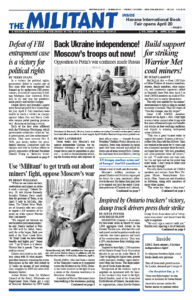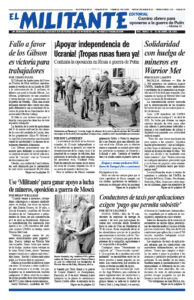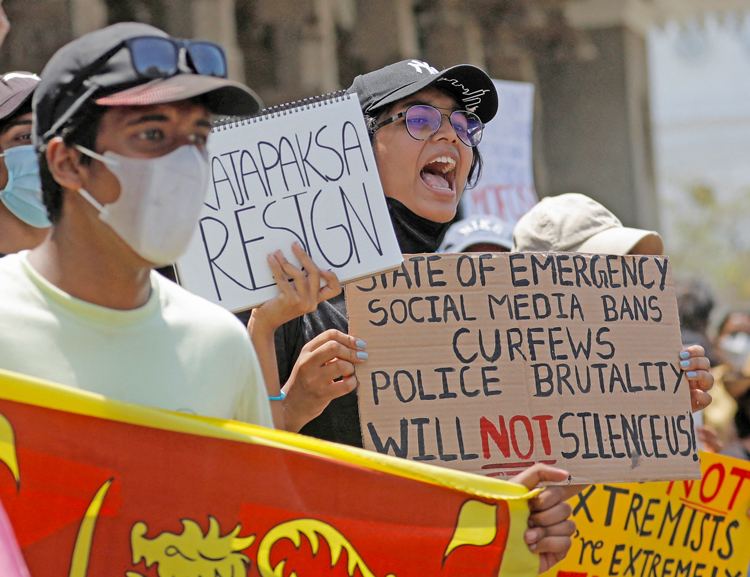Tens of thousands of protesters in Sri Lanka, from the mostly Tamil north to the largely Sinhalese south, marched April 9 demanding President Gotabaya Rajapaksa resign. The country of 22 million is facing its worst financial crisis since independence in 1948, with soaring inflation, spreading power outages and shortages of food and fuel.
“Our futures are uncertain,” Rashika Satheeja told the press at a demonstration in Colombo, the capital, April 4. “But at least we are fighting.” The protest was marked by participation of people from all faiths in a country where the capitalist rulers have long fostered divisions along religious and national lines to try and divide working people. Rajapaksa helped foment a wave of anti-Islamic sentiment in 2019 following bombings by Islamist terrorists that killed nearly 270 people just prior to his election.
“They don’t care about us because we are poor,” Fatima Hussein told Al-Jazeera. “People are angry and frustrated.” Essentials have become unaffordable for many. Sandamali Purnima told the New York Times that meals are increasingly meager for her family, just lentils, rice and tea without milk. The price of white rice is up 93% since 2019.
Many Sri Lankans are switching to firewood and kerosene alternatives as cooking gas is now too expensive to afford.
Doctors warn that the country’s health care system teeters on the edge of collapse amid the crippling power cuts and shortages of life-saving medications.
Government lockdowns during the COVID pandemic gutted the country’s tourist trade, and today’s fuel price hikes, exacerbated by Moscow’s war against Ukraine, have added to the crisis. The government’s attacks on the conditions of working people are worsened by growing pressure for “fiscal responsibility” from the International Monetary Fund.
A 36-hour state of emergency was put in place April 2 after thousands of people protested March 31 in Colombo. Security forces turned tear gas and water cannons on demonstrators.
Rajapaksa and his family are notorious for unleashing violent assaults to silence opponents. Rajapaksa was defense secretary and his brother, Mahinda, president, during the final phase of Sri Lanka’s three-decade civil war that ended in 2009 with the crushing of the Tamil Tigers and displacement of the minority Muslim population.
Muslim Tamils, many brought into Sri Lanka by the former British colonial rulers to work on tea plantations, are an oppressed minority in the majority Buddhist country, and have faced attacks on their language and voting rights.
Despite the threat of arrest and assault by cops, thousands continue to protest, ignoring both the curfew and the state of emergency that Rajapaksa declared on April 1. They vow to keep it up until he quits. The country’s entire cabinet — except for Mahinda Rajapaksa, who is now prime minister — resigned April 3. Under pressure, Rajapaksa dropped the state of emergency and invited opposition party members to join his cabinet, but none took up the offer.
On April 12 the government announced it was suspending interest payments on its debts to the International Monetary Fund. Any type of default comes at a high price. In 2015, after the government couldn’t repay “Belt and Road” loans to Beijing, its largest creditor, the country’s main seaport and 15,000 acres of land around it were handed over to Chinese control for the next 99 years.


